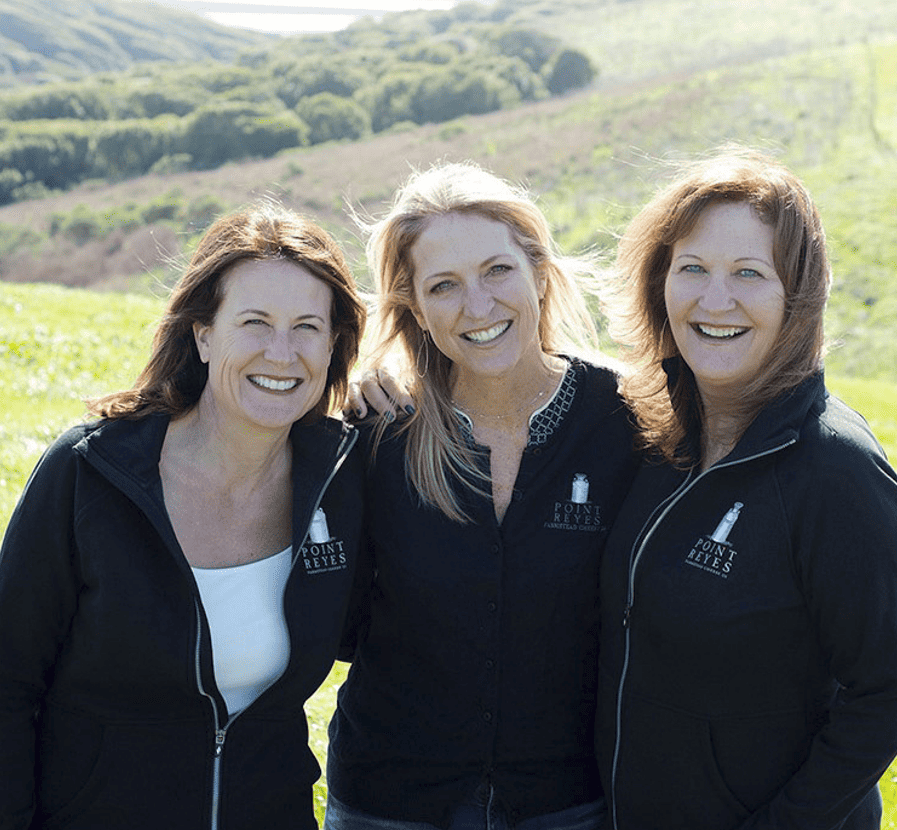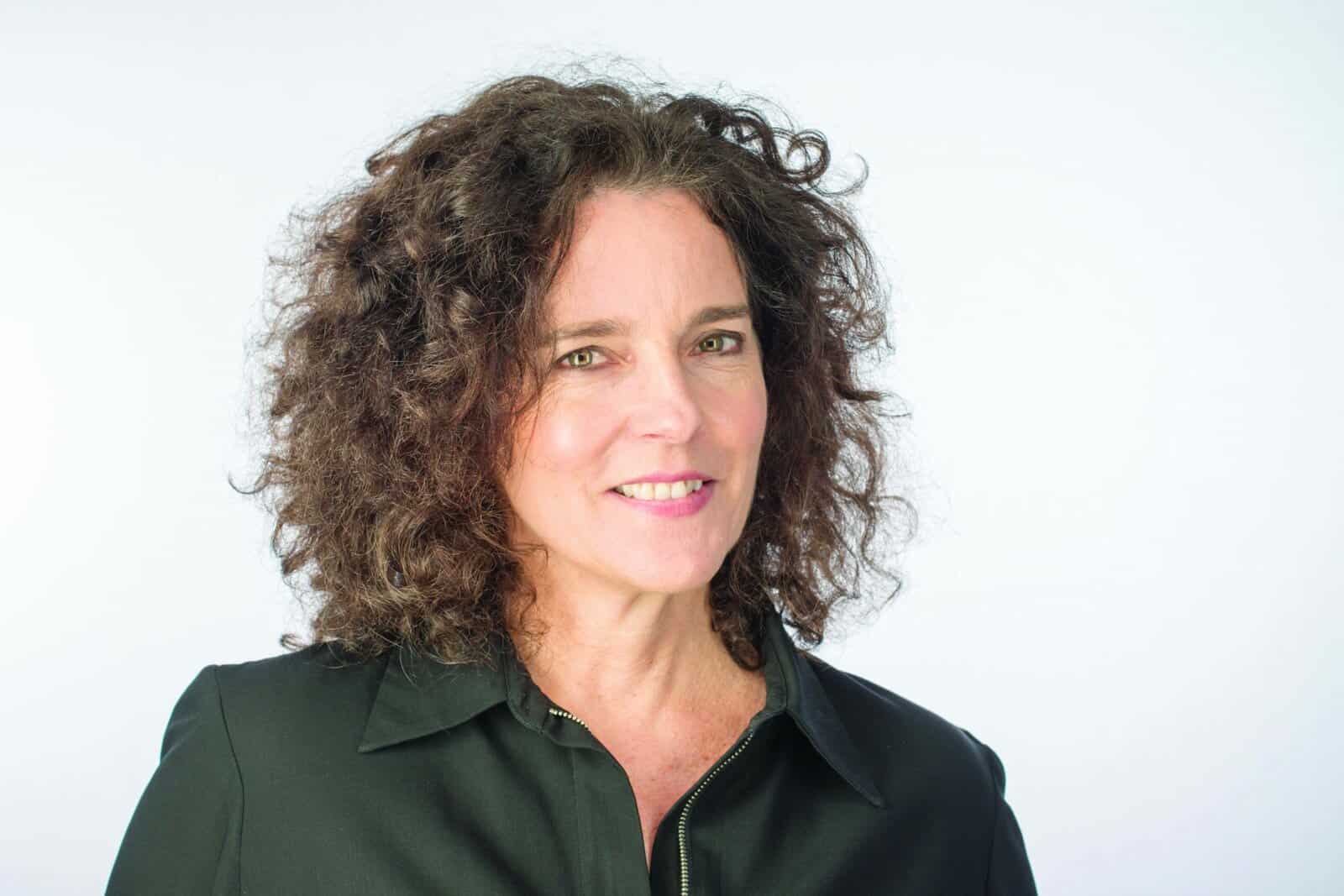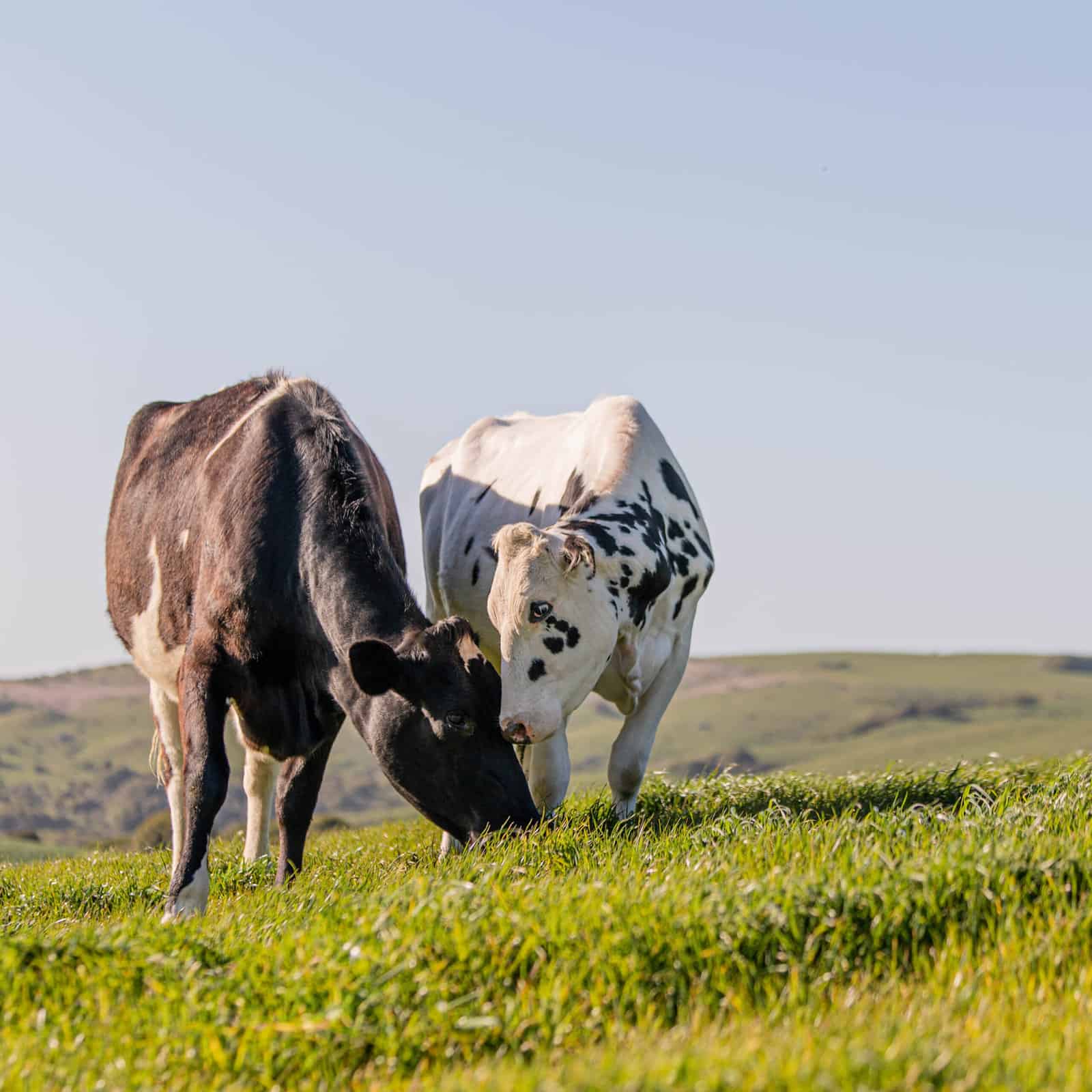
Photography by Molly DeCourdreaux
Driving along the stretch of Highway 1 that skirts Northern California’s Tomales Bay, the scenery is so stunning that it’s easy to miss the turn off for Point Reyes Farmstead Cheese Company. The farm isn’t visible from the narrow one-lane paved road that winds east away from the bay through rolling green pastures dotted with grazing cows until, at the crest of a gentle hill, it suddenly comes into view. The dairy has undergone multiple renovations and upgrades over the years, but the low-slung buildings nestled into the natural curves and valleys of the land are evidence that it has retained its small family farm sensibility. In fact, old photos reveal that it looks much like it did when Bob and Dean Giacomini purchased the 700-acre farm in 1959.
Little did the Giacominis know, 40 years after they settled on their land and raised a family, their daughters would come back to the farm and join the emerging California artisan cheese movement, led by neighbors Sue Conley and Peggy Smith of Cowgirl Creamery.
Today, the Giacominis’ creamery has expanded well beyond only producing milk to include a culinary and education center called The Fork, and a second creamery with a state-of-the-art filtration system right off Highway 101 in Petaluma.

Lynn Giacomini Stray, left, and Jill Giacomini Basch, taste Toma with their dad, Bob Giacomini.
“It was really all about timing,” says Jill Giacomini Basch, who, along with her sisters Diana Giacomini Hagen and Lynn Giacomini Stray, now shares the leadership roles at Point Reyes. “We had all gone away to college and had little interest in coming back to the farm to sell fluid milk—but we were interested in a value-added product like cheese.” Basch credits an influential workshop at the University of California Agriculture Extension, co-hosted by Cowgirl Creamery and the California Farm Bureau, which detailed the benefits of diversifying family dairy farms and convinced her and her sisters to join a growing number of fellow artisan cheesemakers. In 1998 the three women (plus a fourth sister, Karen Giacomini Howard, who has since retired) joined their parents and hired an accomplished cheesemaker from Maytag Dairy Farms in Iowa. Together they released their first cheese in 2000, a raw-milk, rindless, classic-style blue cheese made on the farm with milk produced from their herd of 450 cows—Point Reyes Farmstead Original Blue.
“There was a big learning curve,” Basch says. She describes those early years as consumed with taking classes, refining the blue cheese recipe, attending cheese conferences, and learning as much about the market as they possibly could—all while raising their own families. She is quick to express her and her sisters’ gratitude toward fellow cheesemakers, including Jennifer Bice from Redwood Hill Farm in Sebastopol, and Mary Keehn at Cypress Grove in Humboldt County, who helped them get their start. “Along the way, we discovered there was no blue cheese being produced in California,” she says.
For nine years the Giacominis focused on Original Blue—despite being told by distributors that they were crazy to build a brand on a single farmstead cheese. But as luck would have it, and as a testament to the quality of the cheese, an introduction to Whole Foods Global Cheese Buyer Cathy Strange resulted in national distribution for the young company that was still selling its milk to a local co-op.

Except for Original Blue, all of Point Reyes’ cheese are produced and packaged at the company’s Petaluma facility.
ALL IN THE TIMING
The Giacominis continued to innovate and grow by equipping their farm with robotic milking technology (which allows the cows to be milked whenever they want to be), incorporating methane-powered renewable energy, and reusing and recycling water. They decreased the size of their Holstein herd to minimize the environmental impact on the land and sold an easement to MALT (Marin Agricultural Land Trust), ensuring the property would be protected in perpetuity.
“When this building was completed in 2009, we became much more professional,” says Basch, gesturing to the expansive, light-filled facility that includes offices, a retail area, The Fork, a dining room, and an outdoor herb garden and patio. That same year, Hagen, who had worked in finance in San Francisco for 20 years, came on board full-time as chief financial officer. It was also the year they would begin to develop new cheeses.
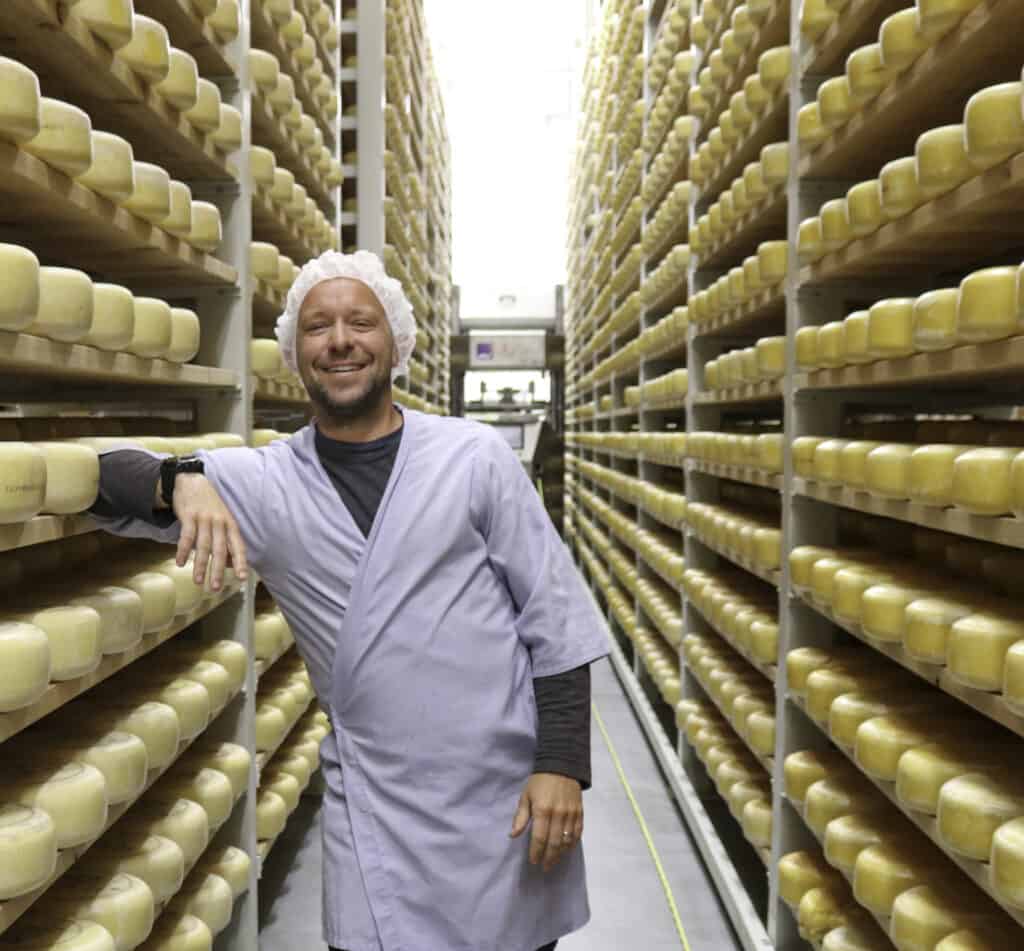
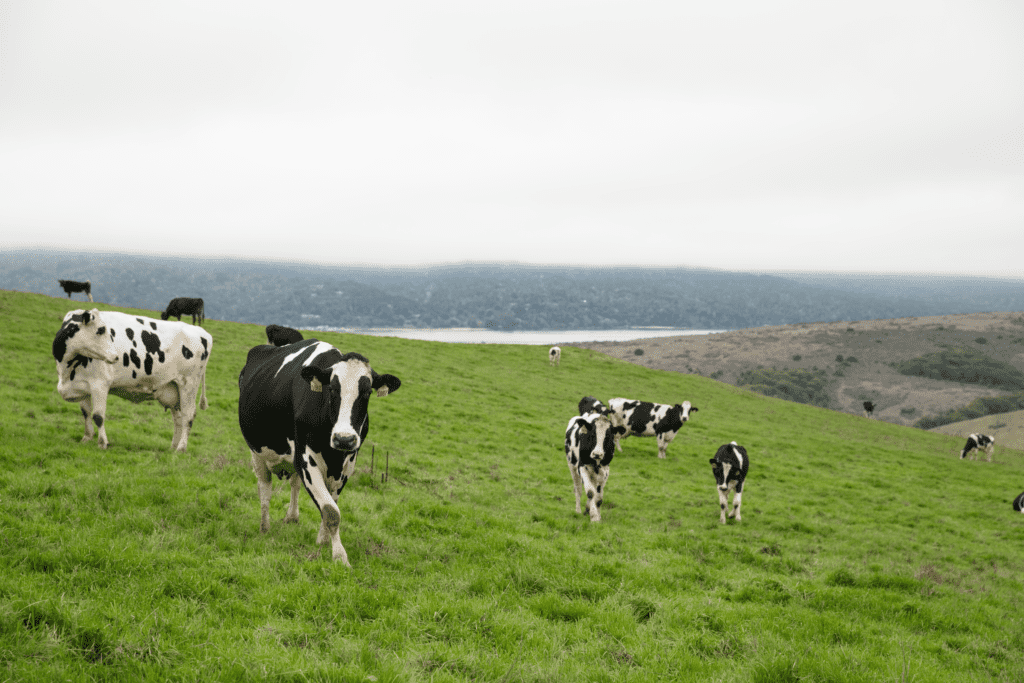
Once again, timing was everything. When their longtime cheesemaker was ready to retire, 26-year-old Kuba Hemmerling, who was making Dutch-style cheese at Traders Point Creamery in Indiana, was tapped to take over the important role. Hemmerling made the trek to the west coast along with his now- wife Jennifer Luttrell. Fourteen years later, Hemmerling is the Master Cheesemaker and Luttrell is The Fork’s culinary director. “We like to say that we got a two-fer,” Basch says with a laugh, who clearly considers the couple (and their 10-year-old son) part of the family.
When he was barely a year into his new job, Hemmerling developed a second cheese—the super-versatile, semi-hard Toma. And more cheese quickly followed: full-flavored Stilton-like Bay Blue, which offers a complement to Original Blue with a fudgier, sweeter profile; an aged gouda in 2014; and an entire suite of flavors was added to the popular Toma, aka the Toma (with Attitude) Family.

MOVING UP AND OUT
“It was clear that soon we would be using all of the milk our herd was producing,” says Hagen. So the sisters decided it was time for a major upgrade. In 2016 they purchased an empty warehouse in Petaluma that had previously housed a beverage distributor. In 2017 they began construction, and a year later they moved in. “It was a huge shift from the farm—we did a big buildout with lots of new equipment and a state-of-the-art filtration room,” says Basch, who admits the first year was a bit rocky. One of the biggest challenges was adjusting to not having the entire team in one place (Point Reyes has 120 employees). “Embracing virtual meetings was necessary out of the gate, and once production began, we discovered we needed to make some changes to the infrastructure—including creating entirely separate rooms for our Bay Blue and Quinta to keep yeast strains separate and allow for different humidity levels.” (The yeast used for Quinta requires higher humidity.) Ultimately, the new location became the site for production and packaging of all the cheeses—except for the flagship Original Blue, which continues to be made at the farm with milk from their own cows and is the only one to retain the farmstead label.


At the 21,000-square-foot Petaluma facility, many of the manual postproduction practices have been replaced with more efficient systems. “We are able to achieve much more uniformity,” says Hemmerling, who credits the automatic pre-press tables for creating more consistent and firmer wheels. Another welcome upgrade is the new aging room, which has 21-foot- tall ceilings and a carefully controlled air-filtration system. A newly purchased wheel-turning robot, affectionately dubbed Tina Turner, now has the responsibility of turning 110 wheels per hour on the 19-foot-tall racks where Toma and gouda are aged. Consistent turning ensures the cheese is exposed to adequate air flow and keeps mold out of the environment. Machines for washing, brushing, and packaging also add to the labor-saving upgrades.
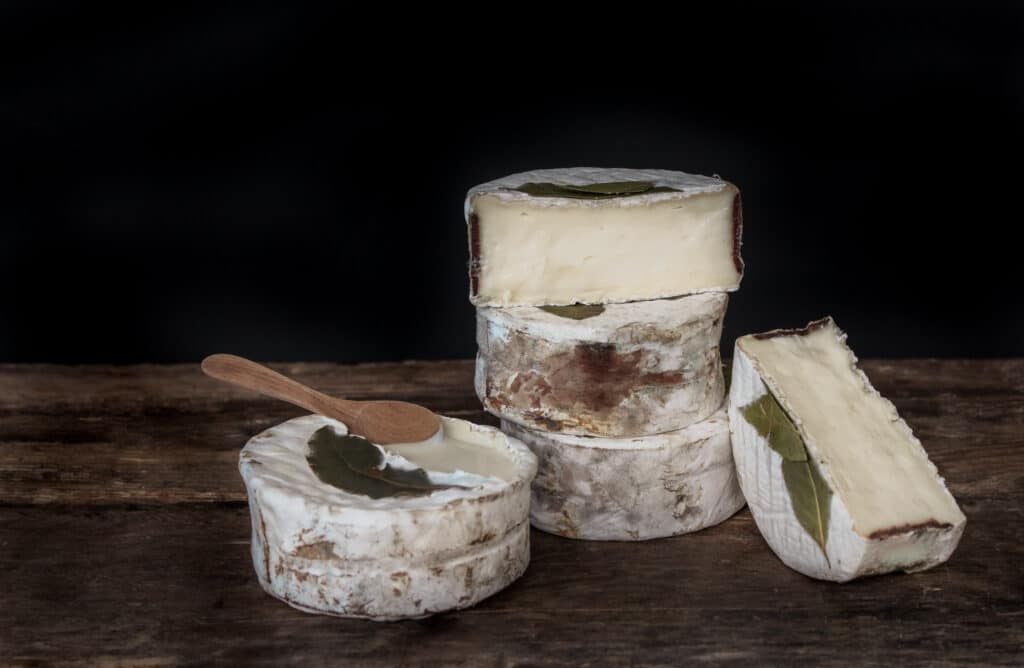
Quinta, the fifth cheese in the Point Reyes’ lineup.
A TASTE OF PLACE
While the Point Reyes team appreciates the state-of-the-art second creamery, it’s their newest cheese they are collectively most excited about. Quinta—their first soft-ripened bloomy-rind cheese—was set to be released in 2020, but the pandemic and supply chain issues delayed its launch until 2022. The name, which means ‘farm’ in Portuguese, pays hom- age to the sisters’ maternal grandparents and mother Dean, who passed away in 2012. In addition, Quinta means fifth in Spanish, and it’s the ‘fifth’ core cheese in the dairy’s line. Finally, the soft-ripened cheese commemorates Point Reyes Farmstead Cheese Company’s twentieth anniversary of making cheese.
Each batch of Quinta turns out 450 4-inch wheels. Once the cheeses are on racks, they are flipped, covered with candida yeast, and then wrapped in softened spruce bark that’s been soaked in a tea made from locally sourced Bay Laurel leaves. The cheeses are closely monitored for 30 days, growing just the right amount of exterior mold in the temperature-controlled room. Before they are packaged and released, each wheel is embellished with a Bay Laurel leaf on top—a symbol of its Northern California origin. Opinions vary on when is the best time to enjoy Quinta; typically, 30 to 45 days results in tangy, buttermilk notes. After that, earthier and mushroomy flavors emerge. Hemmerling suggests the flavor and texture is ideal at 50 days, but the shelf life is up to 100 days.
Excited about promoting their latest cheese and settled into the reality of two locations, the sisters continue to deliberately chart their path forward. But they aren’t navigating alone. Their 85-year-old father is still involved in the business on the dairy side and visits the farm from his home in Petaluma. “Our Dad is our biggest cheerleader,” says Hagan. “He comes out and drives around inspecting the property—sometimes he never gets out of his truck—it’s the life of a farmer.” This enduring love for the animals and the land is clearly shared by Bob Giacomini’s daughters and is at the heart of what keeps this modern company firmly tethered to its early farming roots.
